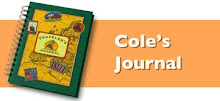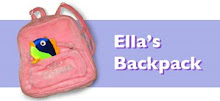
We weren’t sure what to expect when we got to Krakow. Confident that the Old Town would be quaint, we set our expectations low for the rest of the city. After finally landing (and mind you a trip from western Ireland to Krakow is no easy feat) we had a thirty-minute bus ride into the city. Expecting to find the communist looking high rises and grey concrete everywhere, we have been pleasantly surprised. We’ve since learned that while World War II started in Poland, Krakow avoided the German bombs that decimated so many other cities. So the buildings survived, not leaving the communists as much of a chance to put their mark on the city. But the Soviets still felt that Krakow needed a taste of heavy industry and built Nowa Huta (New Steel Works), a massive planned workers’ community on the outskirts of town. Needing to beef up its working-class, this steel factory soon employed 40,000 workers. Today it employs about 10,000, but Nowa Huta still exists and is home to some 200,000 Krakovians.
Poland finally achieved its independence from the communists in 1989, and a lot of things have changed since then. In 2004 Poland became a member of the European Union, but has yet to adopt the Euro. The zloty is the currency and about 3zl equals one dollar. A pint of beer on the main square will run about $3 and nearer our apartment under $2. Lunch can be had for anywhere from $3-$5 and a big dinner in a nice restaurant not much more. And surprisingly we all really like the food options. We’ve been ordering all the Polish specialties and loving it. With the good prices, ice cream (lody) and other snack stops are also a little more frequent. I just hope the kids don’t get to use to it when we get back to the euro zone.
One predominant feature here is the amount of churches. Everywhere you look you can find one, in fact they have more per square mile than anywhere outside Rome. One of them, St. Francis’ Basilica, was Pope John Paul II’s home church while he was the archbishop of Krakow. After being called to Rome, Krakow remained his escape. Locals adore him and will always refer to him as the “Greatest Pole that ever lived!” Another Pole they’re not so sure of, is recent President Lech Kaczynski. He died under terrible circumstances in the plane crash a couple of weeks ago, and while appreciative of his duty, Poles disagree on making Wawel Hill his final resting place. Wawel Hill (pronounced Va-vehl), is the home to an enormous walled fortress with a castle and the nations main cathedral. And even though Warsaw is the capital of Poland, this is where all of the countries greatest rulers and historical leaders are buried. This is a sacred place to the Polish people and so the debate continues as to whether he belongs in such company. I think they consider him more of a victim than a hero.
Our last day in town also happened to be Constitution Day in Poland so we lined up in Old Town for a special parade. Cole loved all the soldiers marching in unison, but the kids were all a little bummed out that no one threw candy. After the parade we met up with a family that our friends back home introduced us to for another big Polish dinner. Oh, and one other visitor we had that I should mention is the Polish tooth fairy. Mia lost a tooth and the fairy left her several zloty coins.



The statue below is Pope John Paul II standing in front of the Wawel Cathedral.

Within the castle walls at Wawel. Look closely and you'll see Cole and Mia running on the left.




Cole and Mia taking the back route up to our apartment.
.jpg)













.jpg)







